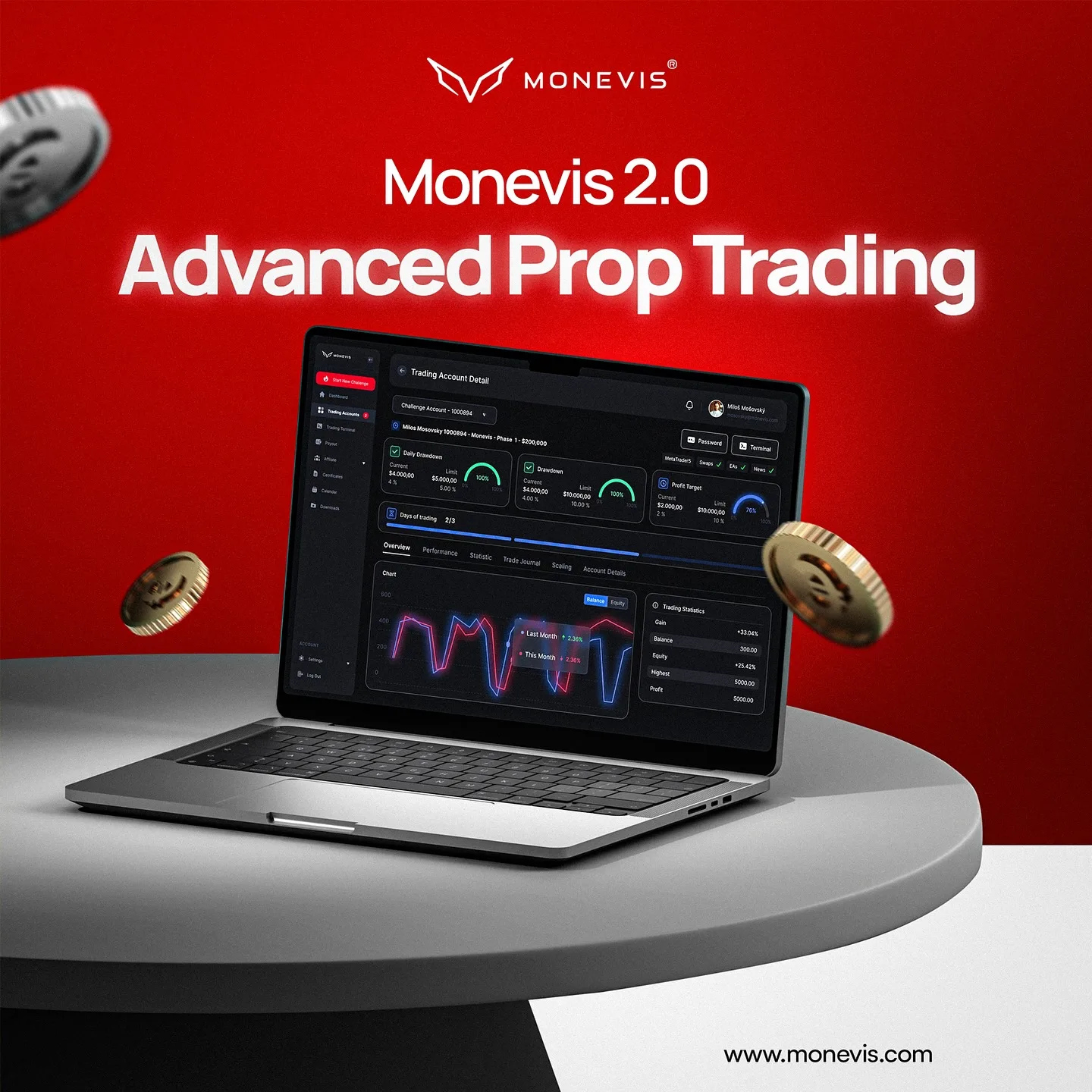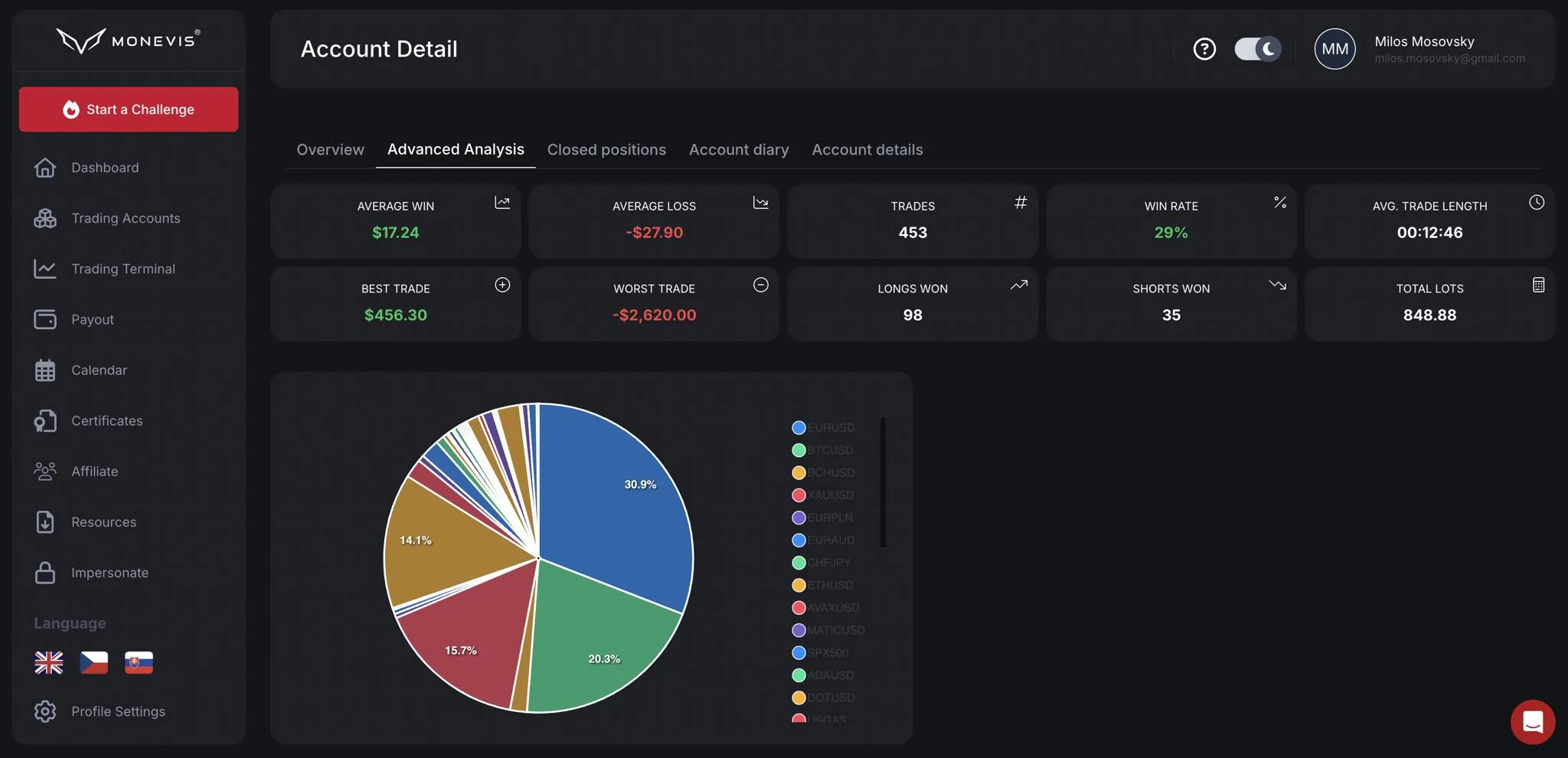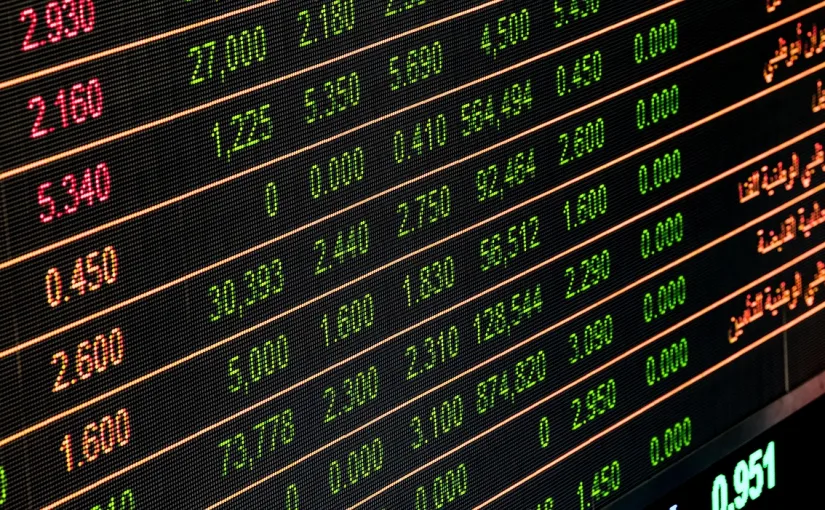HOT TIP: Unleash your trading potential with Monevis®

Do you want to become a successful trader but aren’t sure where to start? In the world of trading, there are many terms that may seem confusing at first glance. That’s why we’ve prepared an overview of the most important ones to help you better understand how financial market trading works. In this article, we will focus on essential terms such as lot, pips, exponential moving average (EMA), gap, spread, and swap. These concepts are the building blocks for every trader, and understanding them will help you navigate trading more effectively and develop a profitable strategy.
Lot: Trade Size
A lot is the basic unit used to determine the size of a trade in the forex market. It represents the quantity of the currency being traded, and there are three main types of lots:
- Standard lot: 100,000 units of the base currency.
- Mini lot: 10,000 units of the base currency.
- Micro lot: 1,000 units of the base currency.
The lot size directly affects the profit and loss in a trade. The larger the lot you use, the greater the potential profit, but also the higher the risk of loss.
Pips: Price Movement
A pip, short for “percentage in point,” represents the smallest price change in the forex market. It is typically the fourth decimal place in a currency pair’s exchange rate (e.g., 0.0001). For some currency pairs, like USD/JPY, a pip is at the second decimal place (e.g., 0.01).
Pips are crucial for calculating the profit or loss of a trade. For instance, if the price of the EUR/USD currency pair rises from 1.1000 to 1.1020, it means a movement of 20 pips.
Exponential Moving Average (EMA): A Tool for Tracking Trends
The Moving Average is one of the most widely used indicators in technical analysis. There are several types of moving averages, and one of the most well-known is the Exponential Moving Average (EMA), which gives more weight to recent data.
EMA helps traders identify market trends—when the price stays above the EMA, it could indicate an uptrend, while if the price remains below the EMA, it may suggest a downtrend. EMA is often used for buy and sell signals, particularly when different timeframes of EMA cross over (e.g., EMA 50 and EMA 200).
Gap: Price Gap
A gap is a situation where the market’s opening price significantly differs from the closing price of the previous period. Gaps are most commonly seen when the market opens after the weekend or after a significant event that affects the market (e.g., the release of economic reports).
Gaps can offer valuable trading opportunities, but they can also be risky since unexpected price movements often occur. Proper understanding and management of gaps can help traders predict where the market might move next.
Spread: Trading Costs
The spread is the difference between the bid and ask prices of a currency pair. It represents the basic cost a trader pays to the broker for each trade. The spread can be fixed or variable, and its size varies depending on market liquidity and the chosen broker.
For instance, in the EUR/USD currency pair, the spread might be 1 pip, meaning the difference between the bid and ask price is 0.0001. The spread is one of the factors that affect trading profitability—the lower the spread, the lower the cost of opening and closing a position.
Swap: Interest Charges
A swap is an interest charge that is either credited or debited from a trader’s account for holding a position overnight. This charge results from the difference in interest rates between the currencies in the traded currency pair. The swap can either be positive (credited as profit) or negative (charged as a cost), depending on the direction of your position and the interest rates.
For example, if you hold a long position on a currency pair where the base currency has a higher interest rate than the quote currency, you may receive a positive swap. Conversely, if the interest rate is lower, the swap will be debited from your account.
Conclusion
Understanding basic terms like lot, pip, EMA, gap, spread, and swap is essential for successful trading in financial markets. These concepts help you better understand how trades work, the costs involved, and how to effectively analyze the market. With these tools, you can better manage risks and develop your own trading strategies that bring you closer to success.
Trading is about continuous learning and improvement, and understanding these terms gives you a solid foundation on which to build. In a prop trading firm like Monevis, this knowledge is key to making the most of the capital the firm provides and achieving maximum profits.
HOT TIP: Unleash your trading potential with Monevis®

